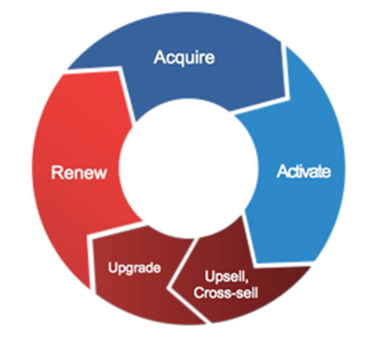Ecommerce is fast becoming the dominant channel for businesses to make sales and the UK is leading the way. Recent international research by Centre for Retail Research shows online sales in the UK is expected to increase by 16.2%, going beyond £52.25 billion by the end of this year.
In this crowded world of ecommerce, online vendors are becoming increasingly competitive. Businesses need to cut through the noise to stay in a customer’s head. The challenge for digital marketers is they must consistently outperform competitors. Staying ahead of rivals has become much harder with the proliferation of choices now available to consumers online. So how can companies continue to grow their online presence?
The best way to attract customers and keep them hooked is by improving current websites and adopting a conversion rate optimisation (CRO) strategy. The goal of CRO is to maximise revenue by either increasing the conversion rate (defined by orders/traffic) or increasing the average order value (AOV).
Ignoring Einstein’s advice, it has become easy for marketers to try repeat the same optimisations and hope for a different result each time. In most cases this is what happens, but digital marketers need to revaluate what they see as ‘good’ conversion rates because it may fall short on what the average actually is.
CRO is more than just testing colours, layouts and images. It’s about profiling ideal customers and putting more emphasis on the user experience which will reverse revenue leakage. Online marketers are using CRO to great effect to increase shopping conversions and improving the average order value. However marketers should look at the bigger picture of the commerce lifecycle.
The Digital Commerce Lifecycle
Digital marketers should expand their thinking around revenue sources – there’s more to this than just website traffic. As customers move through each stage of the digital commerce lifecycle, there is the opportunity for them to either abandon or convert.

How can businesses increase conversion rates?
Optimising for conversion involves removing friction and distractions which could prevent a shopper from completing their online order. Below are a few tips which an online vendor should follow to help improve conversion rates:
- From the user’s perspective look at web design, user interface and purchase funnel. How many steps/clicks does it take to go from the home page through to the order confirmation?
- Localize language, payments, currency and cultural preferences. For the eyes of the global buyer the shopping cart and purchase flow need to be localised.
- Time current page loads and access how long it takes to go through the purchase process.
- Examine whether or not the actions required by the buyer when there is an error are clear and easy to follow.
- Test website on all platforms, devices and browsers.
- Analyse the conversion rate for both new visitors and returning visitors to highlight any differences in how they move through the purchase funnel.
- Access different marketing channels to see if visitors behave differently.
CRO is both an art and a science
The science behind CRO involves split-testing, where traffic is divided equally between a control and a number of variations to test a hypothesis. Digital marketers should create a list of hypothesis ready to be put to the test. Split testing engages customers as they are the ones who are voting for the best experience with their clicks.
A good optimisation hypothesis should be tied directly to a shopper’s behaviour and the desired outcome. For instance by adding a security icon on the cart page, the buyer will have less anxiety and be more inclined to complete the order.
Many optimisers use tools such as Optimizely or Visual Website Optimizer (VWO) to run these tests. To reach statistical significance, these tests should be ran for a minimum of 15 days. Once the winning variation is confirmed the design should be put into production quickly, allowing the company to move on to the next test.
Grow revenue without spending more money
CRO is increasingly becoming valued by marketers who are data and customer driven. Every day, businesses deal with demanding customers who want solid online user experience and demonstrate to customers they made the right choice in using a specific vendor.
CRO has the highest return on investment over other marketing programs. It can increase revenue up to 20% and reduce the cost per acquisition (CPA) by converting visitors that businesses have already paid for through PPC, SEO, email and content marketing.
More and more digital marketers will be looking to adopt CRO, so why not get ahead of the competition and make the first move by implementing a CRO strategy before rivals do? For it is better to be ahead of competition rather than lagging behind.





